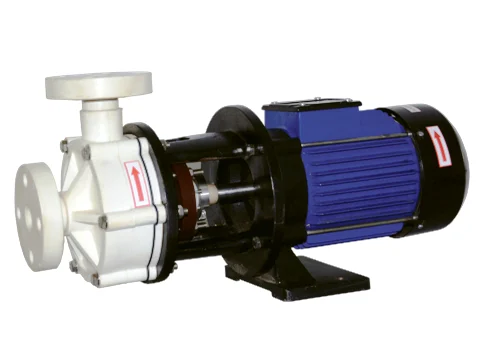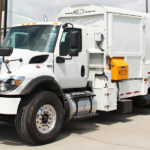Safety isn’t just a checkbox for hazardous industries; it’s the foundation. From chemical plants to mining units, the incorrect fluid handling system can result in toxic leaks, unplanned shutdowns, or worse. That’s why chemical resistant pumps are not just technical assets, they’re safety tools.
These pumps prevent corrosion, reduce operator exposure, and handle aggressive media without compromising on efficiency. In high-risk settings, their design decisions, right from materials to sealing systems, can directly influence compliance, downtime, and long-term costs.
Why Hazardous Industries Can’t Use Standard Pumps
Standard metal or plastic pumps often degrade when exposed to acids, solvents, or oxidizers.
| Issue | Standard Pumps | Chemical Resistant Pumps |
| Corrosion risk | High with aggressive fluids | Designed for chemical resistance |
| Seal failure rate | Frequent | Optimized for harsh chemicals |
| Maintenance frequency | High | Lower |
- Pumps in hazardous zones must handle unpredictable pH, temperature spikes, and corrosive vapors.
- Misjudging material compatibility leads to leaks, downtime, and safety violations.
What Defines a Chemical-Resistant Pump?
These pumps are engineered for media where failure isn’t an option.
Core Features
- Built using thermoplastics like PVDF, ETFE, or lined metals.
- Double mechanical seals or magnetic drives for leak-proof operation.
- Static grounding features for flammable chemical applications.
Media Compatibility
- Designed for sulfuric, nitric, and hydrochloric acids.
- Withstand oxidizing agents and high-viscosity sludges.
- Operate under high TDS and suspended solid conditions.
Key Material Choices and Their Safety Impacts
Choosing the right material isn’t just about performance, it’s about safety.
| Material | Ideal For | Safety Advantage |
| PP | Mild acids, alkalis | Low-cost, limited temp resistance |
| PVDF | Aggressive acids (up to 90°C) | Strong chemical resistance |
| ETFE/FEP | Strong oxidizers and solvents | Non-reactive, high purity |
| SS316/Alloy 20 | Chloride-rich, high-pressure applications | Tough under abrasion and corrosion stress |
Material mismatches are one of the top causes of early pump failure and operator risk.
How These Pumps Help Meet Safety Regulations
Regulatory bodies don’t just want performance, they want proof of safe operations.
Compliance-Driven Design
- Magnetic drive systems eliminate seal-related leak points.
- Static discharge paths help prevent fire hazards in ATEX zones.
- Back pull-out designs reduce chemical exposure during maintenance.
Audit-Ready Documentation
- Pump models come with chemical compatibility certificates.
- Sealing systems tested for thermal and pressure resilience.
- Maintenance SOPs are provided for safe handling.
Real-World Safety Benefits for Industrial Teams
The biggest value isn’t on paper, it’s on the shop floor.
Operator Protection
- No chemical backflow or leak during shutdown.
- No contact with rotating elements or vapor release.
Reduced Downtime
- Non-metallic internals resist corrosion and scaling.
- Pre-calibrated bearing sets and seal kits allow faster overhauls.
Fire and Explosion Risk Mitigation
- No sparking surfaces.
- Antistatic body materials in flammable environments.
When to Switch to a Chemical-Resistant Pump
Not every process needs an upgrade, but some signs are clear.
- Pumps show pitting or thinning after a few months.
- Your maintenance team frequently replaces seals or bearings.
- Vapors escape during tank emptying or line priming.
- You’re dealing with mixed-media waste or oxidizing sludges.
Upgrading here is not a luxury, it’s risk control.
Common Pump Types Used in Hazardous Zones
Each system comes with its own safety benefits.
| Pump Type | Safety Feature | Best Use Case |
| Magnetic Drive Pumps | No seals, leak-proof, quiet | High-purity chemicals, ATEX areas |
| Lined Centrifugal | ETFE/FEP lining, high-pressure build | Oxidizing acid transfer |
| Sealless Barrel Pumps | Auto shutoff, overload protection | Drum emptying of solvents or bases |
| Self-Priming Pumps | No vapor locking, safer handling | Tanker unloading with variable fluids |
Practical Selection Tips for Engineers
What to check before shortlisting a pump:
- Fluid temperature range (e.g., >80°C needs ETFE or PVDF)
- Presence of abrasive particles (requires reinforced internals)
- Batch vs continuous operation (affects seal and motor design)
- Compliance with zone classifications (especially for flammable fluids)
Bonus Tip:
Work with manufacturers who test pumps under real-process simulations, not just lab conditions.
Conclusion
Chemical-resistant pumps are more than upgrades; they are risk reducers. In hazardous industrial processes, the cost of a leak or material failure isn’t just downtime it’s operator health, regulatory scrutiny, and long-term brand damage.
Choosing the right pump means evaluating the entire system: from seal types and materials to temperature range and cleaning ease.
For process engineers and plant heads, investing in chemical-safe pump designs is one of the most direct ways to strengthen onsite safety and performance.
If your plant deals with volatile acids, abrasive sludge, or oxidizing solvents, it’s worth asking: Is your current pump setup safe enough?





